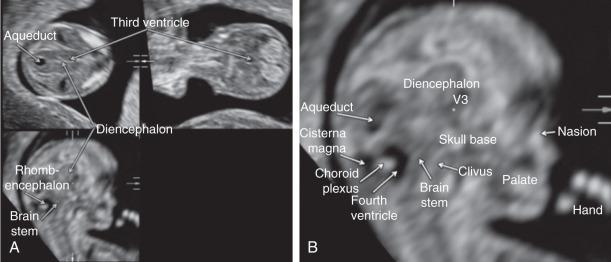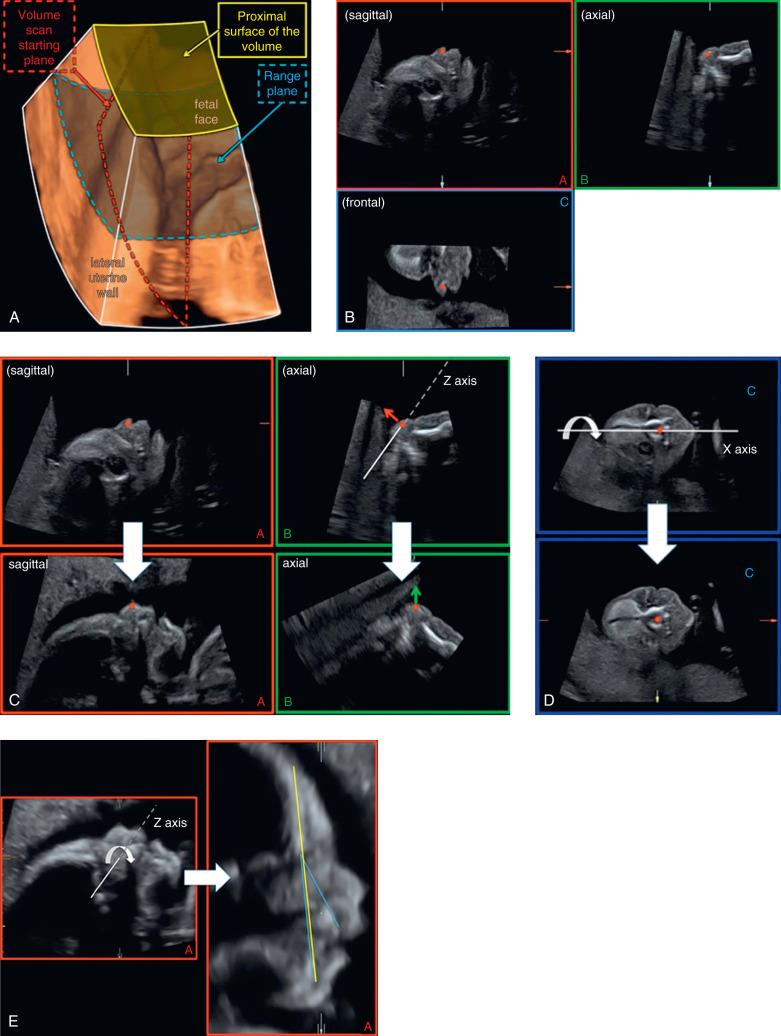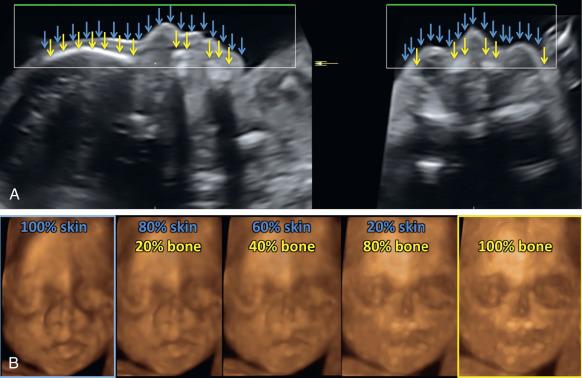Physical Address
304 North Cardinal St.
Dorchester Center, MA 02124
Fetal anatomy is three-dimensional (3D). Cross-sections obtained during real-time ultrasound (US) examination are an artificial reduction of anatomy to produce one still image, created to capture a standard view or the essence of a particular pathology. Acquisition of a good US volume is not trivial, but a comprehensive volume may enable examination at a greater level of detail than is possible from a single cross-section; this is similar to a video in that multiple different neighboring sections are displayed.
Three-dimensional US volumes can be analyzed visually in two principal ways: by viewing cross-sections or surface-rendered views. Cross-sections (planes placed anywhere in the volume) are viewed in either one single plane or two/three (typically orthogonal) planes. The latter is usually called multiplanar display ( Fig. 173.1 ). Before examining the anatomy, the multiplanar display should be used to align the volume according to standard planes ( Fig. 173.2 [face acquire, align]). A curved section can also be placed to follow anatomic structures that do not lie in a straight plane, such as the fetal palate ( Fig. 173.3 ). A display of a number of parallel cross-sections is usually called tomographic display ( Fig. 173.4 ). Surface-rendered views are formatted to display tissue interfaces, either of soft tissue (e.g., the facial skin surface, seen from the amniotic fluid cavity) or bone (e.g., the skull bones, seen from the outside or inside), or a mixture of both ( Fig. 173.5 ).


![Fig. 173.3, Reconstruction of the normal fetal palate, using a curved plane. A frontal insonation of the fetal profile with transducer parallel to the frontal edges of the maxilla and the mandible was used to acquire the volume. The curved reconstruction plane (placement shown by the purple line in the sagittal section [A]) displays the entire hard and the soft palate down to the uvula in (B). Fig. 173.3, Reconstruction of the normal fetal palate, using a curved plane. A frontal insonation of the fetal profile with transducer parallel to the frontal edges of the maxilla and the mandible was used to acquire the volume. The curved reconstruction plane (placement shown by the purple line in the sagittal section [A]) displays the entire hard and the soft palate down to the uvula in (B).](https://storage.googleapis.com/dl.dentistrykey.com/clinical/ThreeDimensionalUltrasoundTechniquesandClinicalApplications/2_3s20B978032344548100173X.jpg)


It is a misunderstanding and oversimplification to assume that any volume containing the structures of interest will enable extraction of diagnostic images. Three main aspects, each of which requires physical knowledge and careful execution, determine the diagnostic quality of successful 3D US: volume acquisition and alignment; volume contrast enhancement; and possibly, surface rendering.
Become a Clinical Tree membership for Full access and enjoy Unlimited articles
If you are a member. Log in here